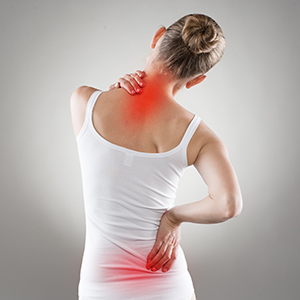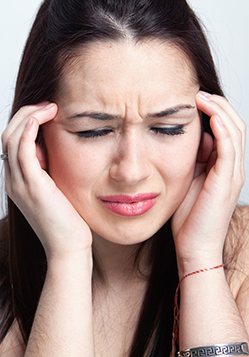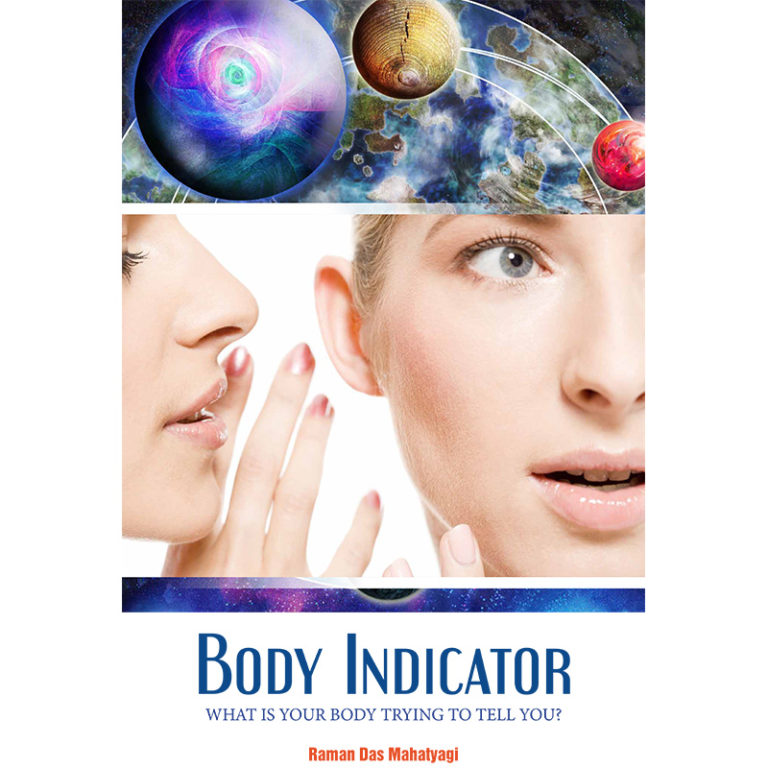
Pain Relief – Ayurvedic Treatment
How Ayurveda Can Provide Faster and Longer-Lasting Pain Relief
All information and resources referenced in this article, including medicinal preparations, exercise and dietary recommendations, are based on the opinion of the author. All content is intended to inform and encourage the reader to seek professional advice if the following conditions and symptoms are present. No information in this article should be considered a diagnosis or prescription and none of it should be followed unless a health advisor is consulted first.
 Pain – everyone has been through it in one way or the other. It can be short-term, sharp and sudden or it can be long-term, persistent and even debilitating. Sometimes it can present itself as a combination of these symptoms. Western Medicine has its own way of tackling complaints associated with pain, while Eastern Medicine and its various modalities have others. Ayurveda – the ancient Indian healing art – is particularly efficient in the treatment of pain, as it addresses the patient holistically and looks deeper into the root cause of it rather than the superficial symptoms.
Pain – everyone has been through it in one way or the other. It can be short-term, sharp and sudden or it can be long-term, persistent and even debilitating. Sometimes it can present itself as a combination of these symptoms. Western Medicine has its own way of tackling complaints associated with pain, while Eastern Medicine and its various modalities have others. Ayurveda – the ancient Indian healing art – is particularly efficient in the treatment of pain, as it addresses the patient holistically and looks deeper into the root cause of it rather than the superficial symptoms.
But before we look at the causes of pain and treatment options, let’s take a look at what pain actually is.
What is Pain?
Pain is an unpleasant sensation that arises when an injury, infection or inflammation is present somewhere in the body. In scientific terms, it is a sensory perception of the mind – a signal sent to the brain when nerve endings are stimulated to alert it that something is wrong. The damage may be in your body tissue, muscles, ligaments or in the nerves themselves.
Pain can be felt and perceived in various ways. A headache may cause a deep throbbing pain, an insect bite may cause a stinging sensation, while arthritis may cause a radiating ache. Depending on the root cause of your pain, your sensation of it will be different.
Pain is distinguished into two major categories; that of short-term (acute) and long-term (chronic) pain:
Acute pain is pain that occurs suddenly and resolves over a short period of time. This is the kind of pain you would feel if you had an infection, if you had recently endured surgery or if you had sustained an injury.
Chronic pain is lingering, persistent pain that lasts for longer periods of time, sometimes for months or even years. This includes conditions such as arthritis, IBS and fibromyalgia. Chronic pain is almost always associated with a chronic condition or illness.
Diagnosing Pain, Pain Types and Causes
Your doctor or health advisor should be able to diagnose your pain, or at least describe it as accurately as possible based on the symptoms presented. Sometimes the pain’s source cannot be identified, at least not by a practitioner of contemporary medicine. In this case, the pain is known as idiopathic.

Not all pain is the same, because not all causes of pain are the same. Some of the most common causes of pain in the human body are:
- Headaches
- Migraines
- Arthritis (joint pain)
- Bronchial pain
- Muscular pain
- Knee and joint pain
- Post-surgery pain
- Post-chemotherapy pain
- Injury pain
- Heart pain
- Chest pain
- Ulcer pain
- Menstrual pain
- Pain associated with an infection
- Pain associated with an inflammation
- Pain of old age
As you can see, each of the above conditions is associated with a different part of the body. In Ayurvedic Medicine, the cause, symptoms and body type would indicate what treatment must be used. In Western Medicine, what would be prescribed for each and every one of the above conditions would more often than not be a painkiller!
Pain Treatment: Pain Killers vs Pain Healers
While Western Medicine tackles pain by masking its symptoms (in essence, suppressing the signal of pain which is conveyed to the brain), Ayurvedic Medicine looks to the root cause to identify the appropriate treatment.

To receive the benefits of Ayurvedic Medicine, an Ayurvedic practitioner must be consulted. As each individual is different, so will the treatment differ.To reinforce this statement, let’s look at two different case studies:
Case study #1: A man, 42, had recently been treated with chemotherapy for the cancerous growths that had appeared in various parts of his body. This treatment option, however, led to continuous bouts of pain. The Ayurvedic practitioner that was consulted identified the root cause of his pain as being dryness in the bone marrow as well as a drying-out of the spinal fluid and surrounding nerves, all of which were due to the intense chemical bombardment his body had endured. When the appropriate Ayurvedic treatment was given, the patient began to see improvement within the first two weeks, and the pain completely dissipated by week four.
Case study #2: A woman, 43, complained about abdominal menstrual pain that would wake her up at 3am, thus interfering with her sleep pattern and energy levels. The Ayurvedic practitioner advised the woman to take an Ayurvedic digestive preparation she had in her home, and the pain completely disappeared within a day. While this digestive preparation may not be advised for all menstruating women, the patient in question found immediate relief for her particular constitution and symptoms as it balanced out her excessive hormones.
Causes of Pain According to Ayurveda
By now, you will have understood the differences between Western Medicine and Ayurveda. But Ayurveda has another view on pain: that it does not necessarily have to be physical. According to Ayurveda, pain can also be emotional. Even physical pain can sometimes be the result of emotions such as anxiety, stress, grief, depression, worry or anger.
Essentially, we have now distinguished pain into physical and emotional, but both can coexist. Ayurveda, however, will break down these categories of pain into even more types of pain according to the philosophy of the Three Doshas:
Arthritic pain is known as Vata pain, as the joints and ligaments have dried out due to extensive air.
Gout pain is known as Pitta pain, as it produces a burning, fire-like sensation.
 Headaches that cause the head to feel hot (often after sitting in the sun for too long or being dehydrated) would require a cooling medicinal preparation, while a headache caused by a cold would require medicine that produces heat and warmth – the exact opposite.
Headaches that cause the head to feel hot (often after sitting in the sun for too long or being dehydrated) would require a cooling medicinal preparation, while a headache caused by a cold would require medicine that produces heat and warmth – the exact opposite.
Migraines caused by chemical imbalances would benefit from Kapha-producing medicine.
Hemorrhoid pain is another Pitta-associated pain and would require cooling down of the fiery, burning symptoms.
Neurological pain after neuro-surgery suggests Vata energy imbalance, hence a nerve healing preparation would be prescribed.
Lastly, a more serious pain like chest pain that cannot be managed immediately can be controlled through breathing exercises like Pranayama. An effective technique would be to close the nostril of the side the pain is felt on and breathe steadily for five minutes.
Ayurvedic Treatment for Pain
Once examining your health history, symptoms and body type, your Ayurvedic practitioner will most likely recommend one or more of the following treatments:
Diet – This will greatly depend on whether your pain is acute or chronic, as well as your body type and the described symptoms (how the pain feels). Diet recommendations are not the same for everyone, which is why your Ayurvedic practitioner will take into account your preferences, intolerances and cultural background.
Herbs – Ayurvedic herbs that are recommended for chronic pain include Nirgundi, Guggulu, Turmeric and Shatavari, while herbs like Jatamansi, Brahmi, Ginger, Hingu and Ashok may address acute conditions. Either way, a professional Ayurvedic practitioner must be consulted regarding the exact herb and its therapeutic dosage.

Yoga – Depending on what the underlying cause of your pain is as well as your level of flexibility, Yoga postures may be advised as a pain treatment. Pranayama (Yogic breathing exercises) in particular is known to relax the body and work as a natural painkiller, providing relief regardless of the condition. For example, NadiShodana Pranayama (alternate nostril breathing) is excellent for migraines, while Sitkari Pranayama(sipping breathing) lowers the body temperature to provide a cooling effect and is thus known to relieve conditions like gout, fever, and fiery emotions.
Self-Care Tips
Here are some final Ayurvedic tips that you may want to implement the next time you deal with pain:
- Drink plenty of water, no matter what the cause of your pain.
- Steer away from foods such as beans, cauliflower, mushrooms, and cold/frozen foods if you’re suffering from arthritic pain.
- Another tip for arthritis is to rub the sore areas with therapeutic-grade Myrrh essential oil (make sure it is well-diluted in a carrier oil).
- For digestive complaints, drink some peppermint, lemongrass or ginger tea.
- If you are a woman in the stage of menopause, consume more liquids, particularly warm beverages, and soups, as these will help lubricate your cells.
Want to relieve your pain once and for all with Ayurveda? Contact us today for a free no-obligation discussion about how we can best treat your condition or visit our clinic for a thorough assessment and treatment plan.



